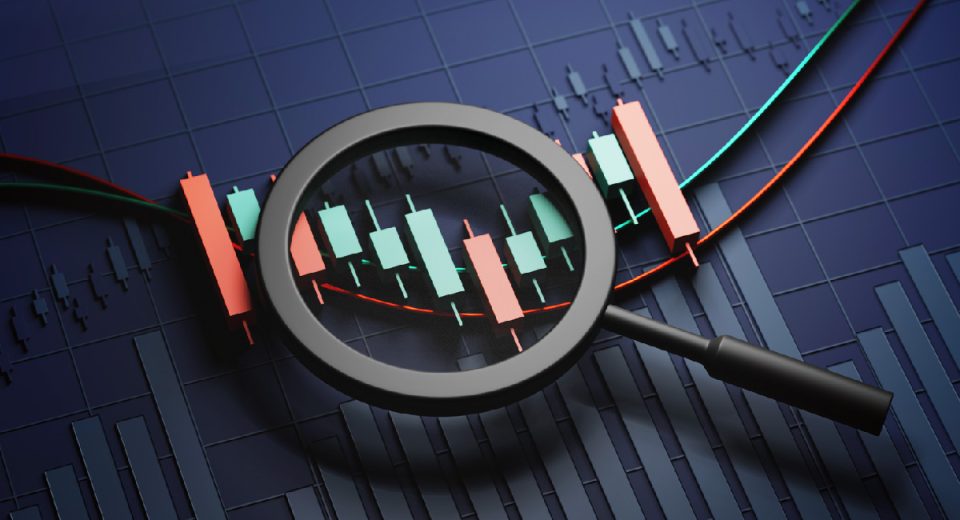Comprehensive trading strategies require the use of diverse technical indicators. A combination of trend, volume and momentum indicators is popular among traders. The stochastic oscillator is a momentum indicator that signals the strength of the current trend to help traders make informed decisions.
Understanding Momentum Analysis
Momentum is the rate of change of an asset’s price in a given direction. If the momentum is strong, the price changes rapidly, indicating that market forces are likely to sustain the trend for longer. Conversely, weak momentum indicates an impending reversal.
Reversals are critical entry and exit points for traders. Traders who are riding the trend may want to exit before the trend reverses and those waiting for an opportunity to enter the market can do so as the trend direction reverses. Speculating reversals before they become apparent allows traders to refine their strategies and identify emerging trading opportunities.
Stochastic Oscillator
The stochastic oscillator compares the closing price of an asset using its price range over a specified period. It generates oversold and overbought signals for traders to identify reversals.
Calculating the Stochastic Oscillator
This indicator is plotted at the bottom of the chart in the form of two lines: %K and %D. These two lines together help traders to identify potential reversals by highlighting shifts in momentum.
%K calculates how the closing price correlates to the broader trend. It oscillates between 0 and 100.
%K = [(C – L14) / H14 -L14)] x 100
C = Closing price of the last day
L14 = Lowest price in the last 14 days
H14 = Highest price in the last 14 days
%D is the 3-day simple moving average of %K.
Interpreting the Stochastic Oscillator Plot
The value of %K and the convergence and divergence of the two plot lines offer various insights to help traders make informed decisions.
Spotting reversals
Traders identify reversals when the value of %K is above or below certain thresholds:
Overbought Conditions
The value of %K above 80 is considered to indicate overbought conditions. This suggests that a price correction or reversal may take place. Traders may exit their long positions or enter short trades at this time.
Oversold Conditions
A value of %K below 20 indicates that the asset is oversold. The price is likely to bounce or undergo a bullish reversal in this case. Traders use this as a signal to exit short positions and go long.
Notably, oversold and overbought conditions do not usually indicate a reversal. Therefore, relying solely on these signals to make trading decisions might not always be helpful.
Trading Crossovers
When the %K and %D lines cross over, it generates a buy or sell signal:
- Bullish Crossover: When %K crosses over %D, it indicates a strong momentum driving the price higher. Traders use this to take long positions.
- Bearish Crossover: A bearish crossover occurs when %K crosses below %D, indicating a strong bearish momentum. This is a signal to sell or take short positions.
Identifying Divergence
Divergence occurs when the price line and momentum indicate different market directions.
Bullish Divergence
When the price makes lower lows and the %K makes higher lows during a downtrend, it is an indication of a bullish reversal. The weakening selling pressure is taken as a signal to switch the trading strategy for rising markets.
Bearish Divergence
A bearish divergence occurs when the price makes higher highs (indicating strength in the uptrend), and %K makes lower highs (indicating a weakness in the upward momentum). This scenario signals a reversal from an uptrend to a downtrend, and traders tend to exit their long positions or get ready to take short positions.
Limitations of the Stochastic Oscillator
The stochastic oscillator is often used in combination with other technical indicators because it has certain limitations, such as:
- It can generate false signals in highly volatile but trending markets.
- It is a lagging indicator. Therefore, traders use it as a confirmation signal rather than a standalone indicator.
- It does not provide clear exit signals.
- It is prone to whipsaws. For instance, it can generate a buy signal during temporary bottoms even in a downtrend.
- A stochastic oscillator does not specify the direction of the trend, only the strength of momentum.
Combining the Stochastic Oscillator with Other Indicators
As no technical indicator is foolproof. Experienced traders popularly combine a few indicators to confirm signals and make better informed decisions. Combining technical indicators can strengthen the analysis and increase the accuracy of speculations.
The stochastic oscillator is used with support and resistance indicators, such as Bollinger Bands, RSI and Fibonacci levels. This helps identify breakouts above or below key levels to confirm a trend. Traders can adjust their strategies to take advantage of the opportunities that consequently arise. The stochastic indicator is used to confirm the trend or a reversal so that traders can open or close positions according to their trading strategies.
The stochastic oscillator can also be combined with price action indicators to take advantage of market opportunities. Traders combine it with candlestick patterns to confirm signals. For example, a morning star pattern during a downtrend, along with a %K below 20, indicates an impending bullish reversal. It is a signal for traders to go long. On the other hand, %K above 80 accompanied by an evening star is a signal to go short.
To Sum Up
- The stochastic oscillator is a momentum indicator.
- It is plotted in the form of two lines below the price chart.
- Traders use this technical indicator to identify trend reversals, continuation and oversold and overbought conditions.
- It is best to combine different types of indicators to improve the accuracy of technical analysis.
- Stochastic oscillators can be combined with range indicators and candlestick chart patterns.
Disclaimer
All data, information and materials are published and provided “as is” solely for informational purposes only, and is not intended nor should be considered, in any way, as investment advice, recommendations, and/or suggestions for performing any actions with financial instruments. The information and opinions presented do not take into account any particular individual’s investment objectives, financial situation or needs, and hence does not constitute as an advice or a recommendation with respect to any investment product. All investors should seek advice from certified financial advisors based on their unique situation before making any investment decisions in accordance to their personal risk appetite. Blackwell Global endeavours to ensure that the information provided is complete and correct, but make no representation as to the actuality, accuracy or completeness of the information. Information, data and opinions may change without notice and Blackwell Global is not obliged to update on the changes. The opinions and views expressed are solely those of the authors and analysts and do not necessarily represent that of Blackwell Global or its management, shareholders, and affiliates. Any projections or views of the market provided may not prove to be accurate. Past performance is not necessarily an indicative of future performance. Blackwell Global assumes no liability for any loss arising directly or indirectly from use of or reliance on such information here in contained. Reproduction of this information, in whole or in part, is not permitted.





